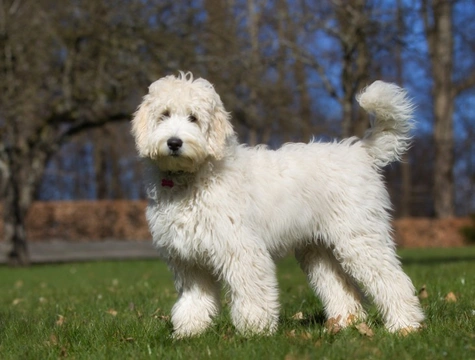
Eight interesting and informative facts about the Labradoodle
The Labradoodle is a hybrid or cross-breed dog that consists of a mixture of a Labrador and a Poodle, and because there can be a lot of variance between the two breeds when they are crossed, Labradoodles do not really conform to a set appearance norm, so a range of quite different looking dogs may all potentially be Labradoodles!
The Labradoodle, while not a recognised pedigree dog breed with The Kennel Club, is nevertheless one of the most popular dog types in the UK, with a strong following of enthusiastic fans!
In this article, we will cover eight interesting and informative facts about Labradoodles, for people who might be considering buying one or who simply think they’re great! Read on to learn more.
Many Labradoodles have non-shedding coats
The Labradoodle’s origins are various, and there is no one accepted beginning of the creation of this type of dog as a deliberate thing. However, one of the known beginnings of the deliberate breeding of the Labradoodle was by organisations that breed and train assistance dogs for blind people and those with other disabilities; whilst many people would benefit from the help of a guide dog to help them to lead independent lives, some people are very allergic to dogs, and so, were not well suited to keeping guide dogs with heavily shedding coats, like the Golden retriever of the Labrador retriever.
The crossing of a poodle and a Labrador means that there is a good chance that the subsequent puppies will inherit the poodle coat, which sheds only very small amounts, and so, does not spread a lot of allergenic dander, and the combined intelligence and trainability of both the Labrador and the poodle meant that such dogs had the perfect personality for assistance work.
Labradoodles can be found in a huge variety of colours
The Labradoodle can appear in any of the colour combinations that can be seen in the two parent breeds, which means that they are one of the most diverse dog types when it comes to the shade and colour of their coats!
The Labradoodle can be seen in chocolate, black, yellow, apricot, white, cream, silver, red, fawn, and many other variations between these shades too!
The size of the Labradoodle can vary a lot as well!
While the Labrador retriever is a fairly uniformly sized medium dog, the poodle can come in either toy, miniature or standard, and so, a wide variety of sizes!
This means that depending on what size poodle is bred to the Labrador, the Labradoodle pups can vary considerably in size, although a standard poodle and a Labrador is the most popular cross, which results in Labradoodles averaging between 14” and 29” tall at the withers, and between 12-40kg in weight!
Labradoodles are fun, outgoing and very versatile.
Both the poodle and the Labrador retriever are very lively, active and fun-loving dogs that tend to be highly sociable, responsive and loving, and make for excellent companions for people from all walks of life.
They are reasonably easy to train and able to retain a wide range of skills and commands, and so, are widely used as assistance dogs in some areas, as well as potentially being well suited to a wide variety of working roles as well as making great pets!
They usually love the water!
The poodle is actually a water dog, and the Labrador retriever is also very at home on water as well as on land, often retrieving in lakes and streams as well as through the rough! This means that the offspring of two dogs of this type such as the Labradoodle will usually be a keen swimmer and never miss a chance to get their paws wet, and if they inherit the poodle-style coat, they will also be rather water repellent and easy to dry off as well!
Labradoodles are hugely popular
While the Labradoodle is not recognised as a pedigree breed, they are widely recognised in the UK and hugely popular nonetheless. Labradoodles have actually overtaken Poodles in the popularity stakes by quite some amount, although they are not yet approaching the Labrador retriever’s enduring level of popularity!
The name “Labradoodle” is recognised as a proper noun!
The word “Labradoodle” is actually recognised by the Oxford English Dictionary as a proper noun, giving them an added layer of familiarity to people that see them out and about!
The Labradoodle may well be recognised as a pedigree breed in a few decades
Because it is a hybrid breed and not a pedigree, the Labradoodle is not recognised by any major breed organisation such as The Kennel Club, as there is so much variance between the appearance of different Labradoodles, and no uniformity of traits.
However, the process for registering a brand new breed is a long and complex one with various milestones along the way, one of the earliest of which is creating a large enough population of dogs of the type to make it self-sustaining in perpetuity, and also, agreeing on a uniform breed standard to be adhered to as well.
The ever-rising popularity of the Labradoodle means that the type will soon likely approach a self-sustaining population, and over the coming years, is apt to become more uniform.
This means that it is entirely possible that a couple of decades down the line, the Labradoodle too will be recognised as a pedigree breed in its own right!



